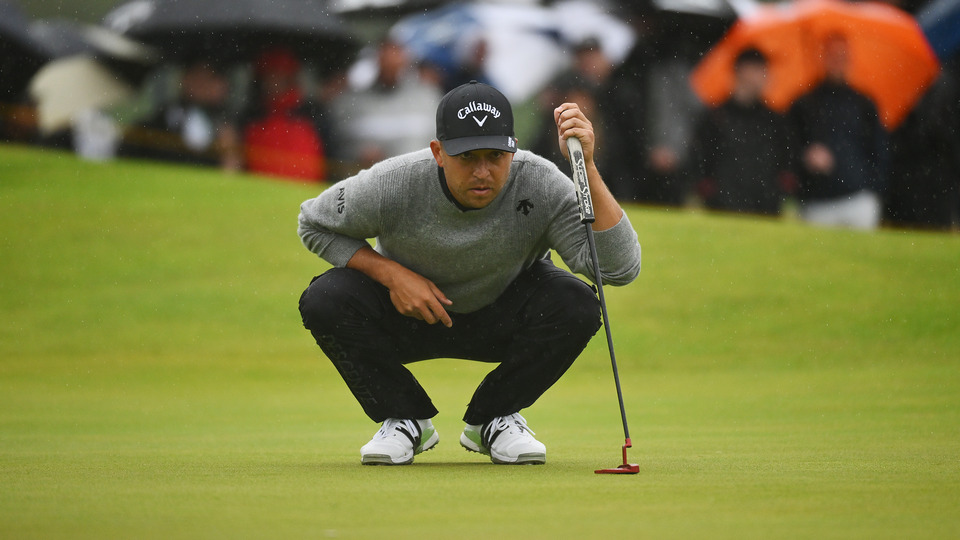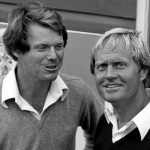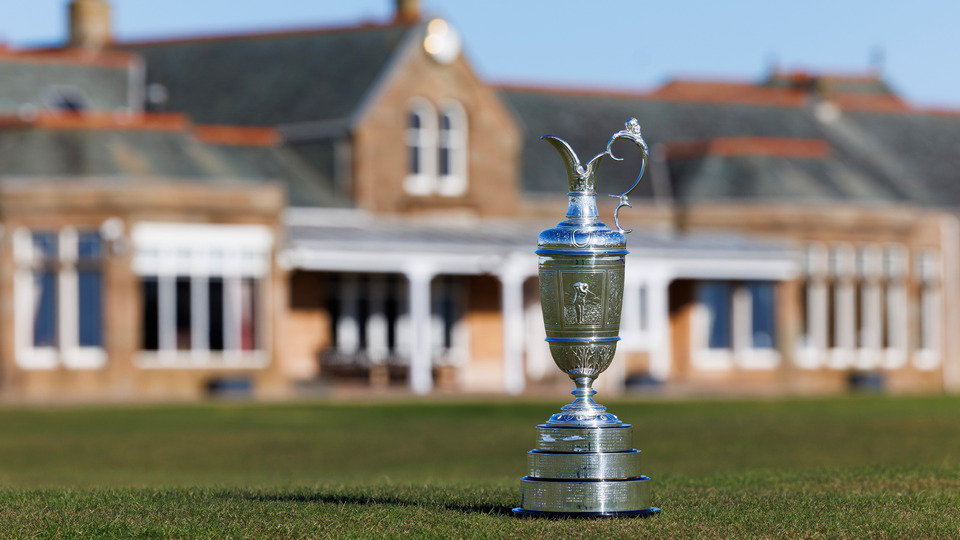Now that the dust has settled since the presentation of the Claret Jug to Xander Schauffele, it’s time to highlight the elements that will linger from this year’s Open at Royal Troon.
The final major championship of 2024 was a spirited contest forcing players to brave the vagaries of Mother Nature and to showcase their talents on the famed links.
When Troon last hosted the Open in 2016 – the play of winner Henrik Stenton and runner-up Phil Mickelson produced one of the finest head-to-head match-ups in the game’s history. The Swede outlasted the American with a record 264 total and three-shot win.
This year’s event produced scores far higher but the drama provided was no less riveting.
***
“X”cellence from Schauffele
First time major wins can be ascribed to good fortune but when winning two different majors the mark of true talent emerges. Xander Schauffele is the “champion golfer of the year” and for a very good reason.
His final round 65 marked the second time he scored such a number in a fourth round of a major – the first coming this past May at Valhalla when winning his first major – the PGA Championship.

Xander’s round was utterly proficient – reaching 16 greens in the regulation stroke, fashioning a bogey-free round with six birdies, including four on the more demanding inward half, with one of them on the most difficult of the championship (11th). He had no three-putts for the 72 holes and he separated himself from the five other players who started the final 18 one stroke behind leader Billy Horschel.
Schauffele’s talents were always present – now the results are happening. Two majors in a year are a clear milestone of accomplishment – he becomes the 21st golfer to achieve it. He now sets his sights on defending his golf medal at the Paris Summer Olympics coming up shortly and he can still overtake Scottie Scheffler for player-of-the-year honors.
In a word – “X”cellent.
Tiger keeps playing. Why?
Entering this year Tiger Woods had stated he would only continue to play if he truly believed he could win. Complicating matters was the reality that the 48-year-old would play only a condensed schedule with the major events the central emphasis.
The results from this year can only be described in one word – abysmal. Played five times and missed the cut in three majors – the lone bright spot came at The Masters and even at Augusta he concluded play with rounds of 82-77.

Playing at the elite level was a reality for Woods in his peak years. That train has long left the station. Since his heroic Masters win in 2019 he has played in 14 majors. The outcome is as clear as day – 7 missed cuts, two withdrawals and not one finish within the top 20.
Tiger’s penchant for spinning the news he wishes to provide is countered by the reality of the numbers he has posted. He admits he cannot practice sufficiently and he won’t play in a number of additional events to gain competitive confidence.
Given those clear realities it’s time to retire from the highest level and prepare for the Champions Tour which is more feasible and can provide the competitive connection he clearly seeks.
When a tiger has no teeth coupled with no claws – then the hunter becomes the hunted.
Enough.
Rory’s enigmatic story continues
After a crushing loss at the US Open at Pinehurst the eyes of the golf world were intent on watching how the four-time major winner – none since 2014 – would react when stepping back onto the competitive stage.
McIlroy returned at the Scottish Open to defend his 2023 win and his play from tee-to-green was solid. A balky putter denied him a higher than T4 finish.

Hopes for a contending effort at Royal Troon looked to be promising. That all unraveled with a lack luster first round 78. Rory followed-up that dismal effort with a 75 and his time at The Open was now closed.
The 35-year-old is an enigma that cannot be figured out in any logical way. When McIlroy is clicking on all cylinders his form is unquestionable. But his consistency is now the issue.
For a player who had won four majors by age 25 – the 10-year drought is becoming more and more of a question mark that the vast talent he has will never be completely fulfilled.
We must now wait nine months for Augusta to see what will happen next.
The clock is ticking.
Welcome back — “Postage Stamp” and “The Railway.”
The return to Royal Troon for the 10th Open Championship marked the re-emergence of two golf holes that have earned their respective places as among the most challenging in all of golf.
The 123-yard par-3 8th features a sliver of green perched on a dune and fiercely defended by several bunkers – one aptly named “coffin.”
While the hole yielded the third most birdies it also imposed harsh realities with the second most double-bogeys and “others.”
So much of elite level golf centers around power and distance – the “postage stamp” showed the best golfers in the world how necessary precision and finesse can be. No pun intended – players had to have the proper postage or have their attempts returned to sender.

“The Railway” is arguably the most intimidating long par-4 in all of championship golf and was the hardest role in relation to par for this year’s Open. Originally, the hole was played as a par-5 but that has since been changed in recent Opens played at Troon.
The close proximity to the adjoining rail line adds a foreboding moment as soon as one steps onto the teeing area.
Out-of-bounds hugs the right side as close as a toddler hugs his mother’s skirt on the first day of school. Numerous tee shots either went out-of-bounds or found themselves in adjacent gorse bushes or high rough. Those opting to play down the left side encountered gorse bushes waiting on that side.
During Saturday’s afternoon play when rain and wind intersected in fierce fashion the high scores mounted quickly.
For the entire week the hole played to an average of 4.426. The 11th was the second hardest hole to birdie – although Schauffele produced one in his final round. In terms of the numbers – the 11th produced the most double bogeys (33) and the most “others” (49).
Scheffler’s kryptonite putting stroke — temporary or more permanent?
The world’s best player coming into this year’s Open opted to forego playing in the Scottish Open the week prior and headed immediately to Troon from the States.
Scheffler finished T7 but was never remotely in the conversation in securing the Claret Jug.

Past concerns about his inconsistency in putting resurfaced and none showcased that more so than the four putts he played at the par-4 9th – the final three coming from 8 feet away. That double-bogey sealed his fate and ended any chance in the championship. Fittingly, Scheffler ended his play with a double-bogey at the final hole. With a bunched leaderboard the wherewithal to show dexterity on the greens was essential. Scheffler failed to do anything noteworthy in that regard.
Scheffler’s tee-to-green acumen has been his clear consistent strength. But the problematic nature of his putting stroke re-entered the picture at The Open. On the flipside, green speeds at Royal Troon are considerably slower than those encountered during normal PGA Tour events.
Going forward the focus will be on how the 27-year-old is able to address this on a more permanent basis.
No question, the six titles he’s won this year are impressive but an inconsistent putting stroke could prove to be the kryptonite that keeps Superman Scheffler from flying to even greater heights.
Olé — the return of Jon Rahm
After having to pull out of this year’s US Open because of a nagging foot injury, the eyes of the golf world were certainly on the two-time major winner when arriving at Troon.
Rahm’s bolting from the PGA Tour to LIV in December 2023 has not produced his finest play on that circuit and the concern was whether the talented 29-year-old could return to form at this year’s Open Championship.

The Spaniard started slowly on rounds of 73-70 but his form bettered in the final two rounds on scores of 72-68 which secured a T7 finish.
The top ten result was his first since last year’s Open at Royal Liverpool where he tied for a runner-up finish.
Rahm ended 2023 in the third position in the world golf rankings. With his involvement with LIV – which produces no world ranking points – coupled with his substandard play in 2024 – he has fallen to 10th.
While not admitting a wrong decision to go with LIV, it’s clear Rahm may have buyer’s remorse. Being in peak form for the majors is something he clearly seeks and seeing him return to form at Troon may be the needed momentum builder for the remainder of this year and into 2025.
The Open – golf’s most global event
Golf at the elite level has four signifcant events – designated the majors. Only one of the four played is outside the United States — The Open.
The championship dates back to 1860 and this year’s event at Royal Troon once again reinforces the global dimension that only The Open provides.
Among its hallmarks is that the championship is only contested on a vintage links course. Forever connecting the modern playing of the game back to its original roots where land and sea intersect.
Mother nature demonstrated its involvement this year and when the rain and wind entered the scene it was necessary for all those competing to brace themselves and show the needed grit to soldier onward.
The Open is the only major in which command of links golf is essential for success. The requisite connection for power and precision are inexorably joined at the hip. Being able to marry successfully the aerial and ground games is the mark of true dexterity.
Cruel bounces can happen and the inverse is also possible where favorable outcomes can come from wayward strokes.

The reach of The Open comes from competitors arriving from all corners of the globe and those competing realize that being proclaimed “champion golfer of the year” has a currency that lives long after they have passed from the scene.
Xander Schauffele was taken with emotion in seeing the various star-studded names incluced on the famed Claret Jug.
For any golfer to have the possibility of having the word “great” placed in front of their name the wherewithal to win The Open is nothing less than mandatory.

Related: The five best modern Open championship players
For the latest news in the golfing world, follow us on X (Formally Twitter).

